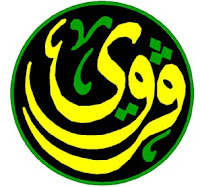By Hedieh Ghavidel, Press TV, Tehran
 |
February 11 marks the anniversary of the Islamic Revolution of Iran.
This day brings remembrance of the fact that the will of a nation can change the course of history, of a time when one nation stood up for its rights and would not be intimidated into accepting tyranny any longer.
The Iranian people put their trust in their charismatic leader Imam Khomeini, who had guided them through the hardships of a long battle against injustice, to finally take their fate into their own hands.
 |
How could the nation continue to tolerate seeing the representative of their country be the West's puppet, who instead of listening to the people's legitimate demands, turned his SAVAK (secret service) attack dogs on them?
While many were living in poverty and neglect, the Shah frivolously gambled away national assets.
 People carrying the body of a young demonstrator, Tehran, 1978 |
If people dared show the slightest hint of dissatisfaction, the Israeli-trained SAVAK would bully them into silence by severing their limbs or taking their lives.
How can a nation maintain its dignity when its people are treated as second-class citizens in the land of their ancestors, while all Americans were granted diplomatic immunity regardless of their vocation and thus were immune from prosecution even when they killed Iranians?
 Young man shot in Tehran demonstrations, February 1979 |
From Feb. 4th to 11th Iran had two governments, one which had long lost its legitimacy among the people, the other dependent on the chosen leader with his millions of loyal followers.
When the remaining supporters of the old regime realized that there was no way to save the sinking ship of the foreign-influenced absolutism, they secretly agreed on a coup in hopes of taking the reins of the popular revolution into their own hands.
 Troops confront angry students at Tehran University gates, 1978 |
When word got out that the armed forces were moving toward Tehran in order to put down the revolution by force, young and old, man, woman and child took to the streets and stood in the way of the military.
The clashes which followed made the military realize they could not stand in the way of the nation's will to be free, and when revolutionaries began to take over police stations and military installations, it declared itself neutral in order to prevent further bloodshed.
 Clergy and soldiers clasp hands in friendship, Tehran, 1979 |
Feb. 11 is not only the anniversary of the revolution, but is also a reminder that the willpower of a united nation can triumph over despotic rule, military force and the illegitimate ambitions of world powers; nothing can stand in the way of a nation determined to regain its freedom.
The Iranian nation which has paid the high price of independence with the blood of its youth, will therefore never cease to safeguard the legacy of the revolution.






.gif)





No comments:
Post a Comment